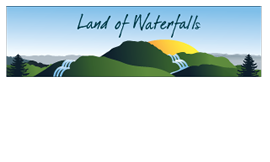 |
| Aston Heath, first Rosman School bus driver. |
With
school starting today it is a good time to remind drivers to be alert around school
buses and in school zones. Transylvania
County Schools have been using school buses for around 90 years. An August 27, 1925 Brevard News article stated, “High school pupils
from Quebec, Lake Toxaway, Calvert and Cherryfield will be brought to Rosman on
the school trucks.” The first driver was
Aston Heath.
Other
districts throughout the county soon added buses to transport children as well.
Heath was appointed mechanic for school
trucks and buses in 1934.
 |
|
Buck McCall, Vera McCall, Lyle Henderson, Warrior Owen, Van
Azilee Owen and others, in front of Rosman High School. |
In
1933 state regulations required that only students living more than two miles
from school would be transported, all others must walk or find some other means
to school. State School Commissioner
O.J. Holler stated that the young people of North Carolina were being ruined by
“riding around too much” and it would be beneficial for them to walk regardless
of the weather, even if a half-loaded bus past directly by them.
The
school principal or superintendent was responsible for selecting and employing
drivers, “according to the code of school laws, with a view to having him
located as near the beginning of the truck route as possible. Students may be employed for this work where
it is deemed advisable.”
Transylvania
County did employee student drivers for many years. The job was considered a big honor. It provided teens with some hard to come by
money. But there was also was a lot of
responsibility associated with the position.
Student bus drivers had to have spotless driving records, maintain good
grades and supervise bus riders who in some cases were older and bigger than
the drivers.
Student
drivers were responsible for the safety of their riders, following bus driver
rules and making certain other drivers followed the law as well. Keith Parker related this story of being
placed in a challenging position.
“Perhaps the most difficult situation was when I had to turn in a
teacher for passing my bus, with the stop sign out and kids crossing the street
already. It was the Junior High School
(the current Community Services building). In those days they crossed in
front of the bus. They jumped out of her way. She did get into trouble and
really gave me every rationalization you can imagine: she was late, very
careful, would never hit one of her kids, and how dare I, a mere high school
student, turn her in, etc. Until she died many years later, she never
seemed to forgive me, but I hold my ground to this day that passing a stopped
school bus by anybody has no excuse.”
Transylvania
County student drivers had an excellent safety record through the years. According to a May 1, 2013 article in the Raleigh
News & Observer student bus drivers throughout the state actually improved
the North Carolina school bus safety record.
It went on to say that North Carolina’s highway transportation record
was unequaled.
This
is even more remarkable when you consider the road conditions encountered by
these young drivers. There are many
stories of buses not having enough power to make it up a mountain loaded, so
students had to get out of the bus and walk up the hill then reload at the top.
Keith Parker
stated, “My route was East Fork and See Off, along with Island Ford and 276 to
Brevard. The bus was old and had a governor
to limit the speed to 25mph. The limited
speed was a headache for others driving behind me, especially on Mill Hill (the
part of US 276 from Rockbrook Camp to Connestee Falls). I never reached the 25mph going up and was
usually in granny low for that stretch in the morning. I could pull the hoses off the vacuum
windshield wipers and get a little more speed and power.
The East Fork
route was the worst. I turned off 276 at
what is now the Connestee Fire Dept., up Big Hill and over into the
Valley. When the weather was good, all
went well. In the winter when the dirt
road was frozen I could get the kids, but if it had thawed by afternoon, I
could barely get off the highway before sinking the old Dodge to the axle.
Many times the kids had to walk from 276
all the way home or until parents picked them up at the top of the hill. I never heard complaints from parents or
kids. They were just thankful for
school.”
And Artie
Wilson told this story, “I became a student school bus driver in the eleventh grade.
My first route was the See Off and East Fork Route, all gravel roads at that
time. These gravel roads presented a lot of trouble during the winter, many
times having to put chains on just to get in and out. In my senior
year I had the Cedar Mountain route. In
September of 1964 in my senior year we had a flood which resulted in a
portion of US 276 South below Connestee Falls being slid off, leaving only
one lane of travel. It was very
interesting that for a few days when the bus got to this point in the road the
school system directed us to let the children off the bus and walk
them across where the road had slid off and then I drove the bus across and
picked the children up on the other side.”
Parker also
shared a story of fun and games when he had to drive a substitute bus, “a very
old Ford with mechanical (not hydraulic) brakes and seats that ran the length
of the bus, one on each side and one down the middle. I could double clutch it
to help slow down but braking took both legs and all the strength this (then)
120 pound boy had. And of course, the
kids loved to slide forward into other kids.
Big party and little obeying the high school driver on those ‘sliding’
trips.”
During the 1959-60
school year Doris Chapman Raines, a junior at Rosman High School, became the
first girl bus driver in Transylvania County serving as a substitute driver. In her senior year Doris drove
full-time. She was paid $62.50 a
month. Doris drove both school and
activity buses for many years. She said
she never really had any troubles and absolutely loved the kids and driving
buses.
A few years
later Judy Wilson Reece was the first girl bus driver for Brevard High School. Judy and Charlotte Ball were recruited to be
drivers because “the boys tore the buses up to much.” They spend the summer of 1963 taking bus
driver lessons from Mr. Harmon. Judy’s
mom would drive them Calvert each day for training because she was worried
about Judy driving the family car. The
girls then spend the day driving the school bus up and down the narrow, windy
roads of East Fork.
Many parents
were outraged at the idea of girl bus drivers.
They signed petitions and wrote letters stating that their children
would not ride a bus with a “girl” driver.
After all the furor Judy said every child on her route from Hwy 276 up
Island Ford Rd. to the intersection with Walnut Hollow and back, then into
Straus Elementary was on board the first day of school. Judy then drove high school students from
Straus to the High School.
Judy proudly
says that her bus required no maintenance during her first year of driving and only
had one burnt out bulb the second year.
It was
typical for bus driver jobs, although not the same routes, to be passed down
through the family. Judy’s older
brothers, Deedie and Carrol, drove buses before her. And younger sister, Brenda Wilson Ivers, now
the Library’s bookmobile driver, drove a bus as well.
Kevin Reece, son
of former student drivers Larry and Judy Wilson Reece, was a substitute driver
during the final year of student drivers.
A February 28, 1988 New York Times article declared, “The
Labor Department has announced that 17-year-olds must stop driving school buses
in North and South Carolina after April 1, ending exemptions to the child labor
laws that the two states enjoyed for two decades. Under
exemptions that had been renewed annually by the department, the two states had
been allowed to hire 16-and 17-year-old bus drivers. Employment of any school bus drivers under
the age of 18 after April 1 will result in fines and possible court
action.” Later an extension was granted
to finish out the school year but 1988 saw the end of student drivers for
school buses.
 |
| Carroll Parker sitting on the bumper of the bus Keith drove in high school. |
One final
story on student drivers, Keith Parker’s younger brother Carroll was also a
student driver but long before he was old enough to drive Carroll made his mark.
Keith shared
this story. The old Dodge was hard to
warm up on cold days to leave my home on Island Ford Road and get up Mill Hill.
My brother Carroll, seven years younger
was eager to help with my bus. I usually
started it to warm up long before departure. We were at the breakfast table when the bus
motor began to misfire. Carroll
begged to “help” and asked what he could do. I said, “Go pull out the choke.” About three minutes later the motor stopped
and he walked back in. I asked “What did you do?” He said, “Just what you said, pull out
the choke and here it is,” handing me about 5 feet of choke cable from the
dash to the engine.
Thank you to
all the former student bus drivers who shared their stories. Ask around and
no doubt others will tell you tales of their bus driving days.
Photographs
and information for this column are provided by the Rowell Bosse North Carolina
Room, Transylvania County Library. Visit
the NC Room during regular library hours (Monday-Friday) to learn more about
our history and see additional photographs.
For more information, comments or suggestions contact Marcy at [email protected] or 828-884-3151 X242.



